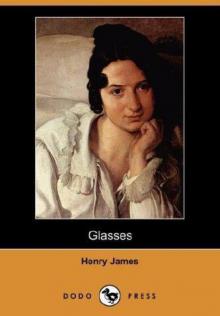- Home
- Henry James
Travels With Henry James Page 9
Travels With Henry James Read online
Page 9
Salisbury Cathedral, to which I made a pilgrimage on leaving Wells, is the very reverse of a ruin, and you take your pleasure there on very different grounds from those I have just attempted to define. It is perhaps the best known cathedral in the world, thanks to its shapely spire; but the spire is so simply and obviously fair that when you have frankly made your bow to it you have anticipated aesthetic analysis. I had seen it before and admired it heartily, and perhaps I should have done as well to let my admiration rest. I confess that on repeated inspection it grew to seem to me the least bit banal, as the French say, and I began to consider whether it doesn’t belong to the same range of art as the Apollo Belvidere or the Venus de’ Medici. I incline to think that if I had to live within sight of a cathedral and encounter it in my daily comings and goings, I should grow less weary of the rugged black front of Exeter than of the sweet perfection of Salisbury. There are people who become easily satiated with blonde beauties, and Salisbury Cathedral belongs, if I may say so, to the order of blondes. The other lions of Salisbury, Stonehenge and Wilton House, I revisited with undiminished interest. Stonehenge is rather a hackneyed shrine of pilgrimage. At the time of my former visit a picnic party was making libations of beer on the dreadful altar-sites. But the mighty mystery of the place has not yet been stared out of countenance, and as on this occasion there were no picnickers, we were left to drink deep of the harmony of its solemn isolation and its unrecorded past. It stands as lonely in history as it does on the great plain, whose many-tinted green waves, as they roll away from it, seem to symbolize the ebb of the long centuries which have left it so portentously unexplained. You may put a hundred questions to these rough-hewn giants as they bend in grim contemplation of their fallen companions; but your curiosity falls dead in the vast sunny stillness that enshrouds them, and the strange monument, with all its unspoken memories, becomes simply a heart-stirring picture in a land of pictures. It is indeed immensely picturesque. At a distance, you see it standing in a shallow dell of the plain, looking hardly larger than a group of ten-pins on a bowling-green. I can fancy sitting all a summer’s day watching its shadows shorten and lengthen again, and drawing a delicious contrast between the world’s duration and the feeble span of individual experience. There is something in Stonehenge almost reassuring, and if you are disposed to feel that life is a rather superficial matter, and that we soon get to the bottom of things, the immemorial gray pillars may serve to remind you of the enormous background of Time. Salisbury is indeed rich in antiquities. Wilton House, a most comely old residence of the Earl of Pembroke, preserves a noble collection of Greek and Roman marbles. These are ranged round a charming cloister, occupying the centre of the house, which is exhibited in the most liberal fashion. Out of the cloister opens a series of drawing-rooms hung with family portraits, chiefly by Van Dyck, all of superlative merit. Among them hangs supreme, as the Van Dyck par excellence, the famous and magnificent group of the whole Pembroke family of James I’s time. This splendid work has every pictorial merit—design, color, elegance, force, and finish, and I have been vainly wondering to this hour what it needs to be the finest piece of portraiture, as it surely is one of the most ambitious, in the world. What it lacks, characteristically, in a certain uncompromising solidity it recovers in the beautiful dignity of its position—unmoved from the stately house in which its authors sojourned and wrought, familiar to the descendants of its noble originals.
A EUROPEAN SUMMER: FROM CHAMBERY TO MILAN
November 1872
Sketch of “Les Charmettes,” ca. 1830.
YOUR TRULY SENTIMENTAL TOURIST CAN NEVER bouder long, and it was at Chambéry—but four hours from Geneva—that I accepted the situation, and decided that there might be mysterious delights in entering Italy whizzing through an eight-mile tunnel, like some highly-improved projectile of the period. I found my reward in the Savoyard landscape, which greets you betimes with something of a Southern smile. If it is not as Italian as Italy, it is, at least, more Italian than Switzerland—more Italian, too, I should think, than can seem natural and proper to the swarming red-legged soldiery who so ostentatiously assign it to the dominion of M. Thiers. The light and coloring had, to my eyes, not a little of that mollified depth which they had last observed in Italy. It was simply, perhaps, that the weather was hot and that the mountains were drowsing in that iridescent haze which I have seen nearer home than at Chambéry. But the vegetation, assuredly, had an all but Transalpine twist and curl, and the classic wayside tangle of corn and vines left nothing to be desired in the line of careless grace. Chambéry as a town, however, affords little premonition of Italy. There is shabbiness and shabbiness, the discriminating tourist will tell you; and that of the ancient capital of Savoy lacks color. I found a better pastime, however, than strolling through the dark, dull streets in quest of “effects” that were not forthcoming. The first urchin you meet will tell you the way to Les Charmettes and the Maison Jean-Jacques. A very pleasant way it becomes as soon as it leaves the town—a winding, climbing by-road, bordered with such a tall and sturdy hedge as to give it the air of an English lane—if you can fancy an English lane introducing you to the haunts of a Madame de Warens! The house which formerly sheltered this lady’s singular ménage stands on a hillside above the road, which a rapid path connects with the little grass-grown terrace before it. It is a small, shabby, homely dwelling, with a certain reputable solidity, however, and more of internal spaciousness than of outside promise. The place is shown by an elderly Frenchwoman, who points out the very few surviving objects which you may touch, with the reflection—complacent in whatsoever degree suits you—that Rousseau’s hand has often lain there. It was presumably a meagrely-appointed house, and I wondered that on these scanty features so much expression should linger. But the edifice has an ancient ponderosity of structure, and the dust of the eighteenth century seems to lie on its worm-eaten floors, to cling to the faded old papiers à ramages on the walls, and to lodge in the crevices of the brown wooden ceilings. Madame de Warens’s bed remains, with Rousseau’s own narrow couch, his little warped and cracked yellow spinet, and a battered, turnip-shaped silver timepiece, engraved with its master’s name—its primitive tick as extinct as his heart-beats. It cost me, I confess, a somewhat pitying acceleration of my own to see this intimately personal relic of the genius loci—for it had dwelt in his waistcoat pocket, than which there is hardly a material point in space nearer to a man’s consciousness—tossed so irreverently upon the table on which you deposited your fee, beside the dog’s-eared visitors’ record—the livre de cuisine recently denounced by Madame Sand. In fact, the place generally, in so far as some faint ghostly presence of its famous inmates seems to linger there, is by no means exhilarating. Coppet and Ferney tell, if not of pure happiness, at least of prosperity and honor, wealth and success. But Les Charmettes is haunted by ghosts unclean and forlorn. The place tells of poverty, trouble, and impurity. A good deal of clever modern talent in France has been employed in touching up the episode of which it was the scene, and tricking it out in idyllic love-knots. But as I stand on the charming terrace I have mentioned—a little jewel of a terrace, with grassy flags and a mossy parapet, and an admirable view of great swelling violet hills—stand there reminded how much sweeter Nature is than man, the story looked rather wan and unlovely beneath these literary decorations, and I could muster no keener relish for it than is implied in perfect pity. Hero and heroine were first-rate subjects for psychology, but hardly for poetry. But, not to moralize too sternly for a tourist between trains, I should add that, as an illustration to be inserted mentally in the text of the “Confessions,” a glimpse of Les Charmettes is pleasant enough. It completes the rare charm of good autobiography to behold with one’s eyes the faded and battered mise en scène of the story; and Rousseau’s narrative is so incomparably vivid and forcible, that the sordid little house at Chambéry seems of a hardly deeper shade of reality than the images you contemplate in his pages.
If I spent an hour at
Les Charmettes, fumbling thus helplessly with the past, I frankly recognized on the morrow that the Mont Cenis Tunnel savors strongly of the future. As I passed along the St. Gothard, a couple of months since, I perceived, halfway up the Swiss ascent, a group of navvies at work in a gorge beneath the road. They had laid bare a broad surface of granite, and had punched in the centre of it a round, black cavity of about the dimensions, as it seemed to me, of a soup-plate. This was the embryonic form of the dark mid-channel of the St. Gothard Railway, which is to attain its perfect development some eight years hence. The Mont Genis, therefore, may be held to have set a fashion which will be followed till the highest Himalaya is but the ornamental apex or snow-capped gable-tip of some resounding fuliginous corridor. The tunnel differs but in length from other tunnels; you spend half an hour in it. But you come whizzing out of it into Transalpine Italy, and, as you look back, may fancy it shrugging its mighty shoulders over the track—a spasmodic protest of immobility against speed. The tunnel is certainly not a poetic object, but there is no perfection without its beauty; and as you measure the long rugged outline of the pyramid of which it forms the base, you must admit that it is the perfection of a short cut. Twenty-four hours from Paris to Turin is speed for the times—speed which may content us, at any rate, until expansive Berlin has succeeded in placing itself at thirty-six from Milan. I entered Turin of a lovely August afternoon, and found a city of arcades, of pink and yellow stucco, of innumerable cafés, blue-legged officers, and ladies draped in the Spanish veil. An old friend of Italy, coming back to her, finds an easy waking for sleeping memories. Every object is a reminder. Half an hour after my arrival, as I stood at my window, looking out on the great square, it seemed to me that the scene within and without was a rough résumé of every pleasure and every impression I had formerly gathered from Italy: the balcony and the venetian-blind, the cool floor of speckled concrete, the lavish delusions of frescoed wall and ceiling, the broad divan framed for the noonday siesta, the massive mediaeval Castello in mid-square, with its shabby rear and its pompous Palladian front, the brick campaniles beyond, the milder, yellower light, the brighter colors and softer sounds. Later, beneath the arcades, I found many an old acquaintance, beautiful officers, resplendent, slow-strolling, contemplative of female beauty; civil and peaceful dandies, hardly less gorgeous, with that religious faith in their moustaches and shirt-fronts which distinguishes the belle jeunesse of Italy; ladies most artfully veiled in lace mantillas, but with too little art—or too much nature, at least—in the region of the corsage; well-conditioned young abati, with neatly-drawn stockings. These, indeed, are not objects of first-rate interest, and with such Turin is rather meagrely furnished. It has no architecture, no churches, no monuments, nor especially picturesque street-scenery. It has, indeed, the great votive temple of the Superga, which stands on a high hilltop above the city, gazing across at Monte Rosa, and lifting its own fine dome against the sky with no contemptible art. But when you have seen the Superga from the quay beside the Po, as shrivelled and yellow in August as some classic Spanish stream, and said to yourself that in architecture position is half the battle, you have nothing left to visit but the Museum of pictures. The Turin Gallery, which is large and well arranged, is the fortunate owner of three or four masterpieces; a couple of magnificent Van Dycks and a couple of Paul Veroneses; the latter a Queen of Sheba and a Feast at the House of Levi—the usual splendid combination of brocades, grandees, and marble colonnades dividing skies de turquoise malade, as Théophile Gautier says. The Veroneses are fine, but with Venice in prospect the traveller feels at liberty to keep his best attention in reserve. If, however, he has the proper relish for Van Dyck, let him linger long and fondly here; for that admiration will never be more potently stirred than by the delicious picture of the three little royal highnesses, daughters of Charles I. All the purity of childhood is here, and all its soft solidity of structure, rounded tenderly beneath the spangled satin, and contrasted charmingly with its pompous rigidity. The little princesses, clad respectively in crimson, white, and blue, stand up in their ruffs and fardingales in dimpled serenity, squaring their infantine stomachers at the spectator with an innocence, a dignity, a delightful grotesqueness, which make the picture as real as it is elegant. You might kiss their hands, but you certainly would think twice before pinching their cheeks—provocative as they are of this tribute of admiration—and would altogether lack presumption to lift them off the ground—the royal dais on which they stand so sturdily planted par droit de naissance. There is something inimitable in the paternal gallantry with which the painter has touched off these imposing little ladies. They were babies, yet they were princesses, and he has contrived, we may fancy, to work into his picture an intimation that they were creatures whom, in their teens, the lucklessly smitten—even as he was prematurely—must vainly sigh for. Although the work is a masterpiece of execution, its merits under this head may be emulated—at a distance. The lovely modulations of color in the three contrasted and harmonized little satin petticoats—the solidity of the little heads, in spite of all their prettiness—the happy, unexaggerated squareness and maturity of pose—are, severally, points to study, to imitate, and to reproduce with profit. But the taste of the picture is its great secret as well as its great merit—a taste which seems one of the lost instincts of mankind. Go and enjoy this supreme expression of Van Dyck’s fine sense, and admit that never was a politer work.
Milan is an older, richer, more historic city than Turin; but its general aspect is no more distinctly Italian. The long Austrian occupation, perhaps, did something to Germanize its physiognomy; though, indeed, this is an indifferent explanation when one remembers how well, picturesquely, Italy held its own in Venetia. Far be it from me, moreover, to accuse Milan of a want of picturesqueness. I mean simply that at certain points it seems rather like the last of the Northern capitals than the first of the Southern. The cathedral is before all things picturesque; it is not interesting, it is not logical, it is not even, to some minds, commandingly beautiful; but it is grandly curious, superbly rich. I hope, for my own part, that I shall never grow too fastidious to enjoy it. If it had no other beauty it would have that of impressive, immeasurable achievement. As I strolled beside its vast indented base one evening, and felt it above me, massing its grey mysteries in the starlight, while the restless human tide on which I floated rose no higher than the first great block of street-soiled marble, I was tempted to believe that beauty in great architecture is almost a secondary merit, and that the main point is mass—such mass as may make it a supreme embodiment of sustained effort. Viewed in this way, a great building is the greatest conceivable work of art. More than any other it represents difficulties annulled, resources combined, labor, courage, and patience. And there are people who tell us that art has nothing to do with morality. Little enough, doubtless, when it is concerned, over so little, in painting the roof of Milan Cathedral within to represent carved stone-work. Of this famous roof every one has heard—how good it is, how bad, how perfect a delusion, how transparent an artifice. It is the first thing your valet de place shows you on entering the church. The discriminating tourist may accept it philosophically, I think; for the interior, though admirably effective, has no very recondite beauties. It is splendidly vast and dim; the altar-lamps twinkle afar through the incense-thickened air like fog-lights at sea, and the great columns rise straight to the roof, which hardly curves to meet them, with the girth and altitude of oaks of a thousand years; but there is little refinement of design—few of those felicities of proportion which the eye caresses, when it finds them, very much as the memory retains and repeats some happy line of poetry or some delightful musical phrase. But picturesque, I repeat, is the whole vast scene, and nothing more so than a certain exhibition which I privately enjoyed of the relics of St. Charles Borromeo. This holy man lies at his eternal rest in a small but gorgeous sepulchral chapel, beneath the pavement of the church, before the high altar; and, for the modest sum of five francs, you may
have his shrivelled mortality unveiled, and gaze at it in all the dreadful double scepticism of a Protestant and a tourist. The Catholic Church, I believe, has some doctrine that its ends justify at need any means whatsoever; a fortiori, therefore, nothing it does can be ridiculous. The performance in question, of which the good San Carlo fit les frais, as the French say, was impressive, certainly, but as great grotesqueness is impressive. The little sacristan, having secured his audience, whipped on a white tunic over his frock, lighted a couple of extra candles, and proceeded to remove from above the altar, by means of a crank, a sort of sliding shutter, just as you may see a shop-boy do of a morning at his master’s window. In this case, too, a large sheet of plate-glass was uncovered, and, to form an idea of the étalage, you must imagine that a jeweller, for reasons of his own, has struck an unnatural partnership with an undertaker. The black, mummified corpse of the saint is stretched out in a glass coffin, clad in his mouldering canonicals, mitred, crosiered, and gloved, and glittering with votive jewels. It is an extraordinary mixture of death and life; the desiccated clay, the ashen rags, the hideous little black mask and skull, and the living, glowing, twinkling splendor of diamonds, emeralds, and sapphires. The collection is really fine, and various great historic names are attached to the different offerings. Whatever may be the better opinion as to whether the Church is in a decline, I cannot help thinking that she will make a tolerable figure in the world so long as she retains this great capital of bric-a-brac, scintillating throughout Christendom at effectively scattered points. You see, I am forced to agree after all, in spite of the sliding shutter and the profane exhibitory arts of the sacristan, that the majesty of the Church saved the situation, or made it, at least, sublimely ridiculous. Yet it was from a natural desire to breathe a sweeter air that I immediately afterwards undertook the interminable climb to the roof of the cathedral. This is a great spectacle, and one of the best known; for every square inch of wall on the winding stairways is bescribbled with a traveller’s name. There is a great glare from the far-stretching slopes of marble, a confusion (like the masts of a navy or the spears of an army) of image-capped pinnacles, biting the impalpable blue, and, better than either, a delicious view of level Lombardy, sleeping in its rich Transalpine light, and looking, with its white-walled dwellings, and the spires on its horizon, like a vast green sea spotted with ships. After two months of Switzerland, the Lombard plain is a delicious rest to the eye, and the yellow, liquid, free-flowing light (as if in favored Italy the vessels of heaven were more widely opened) had for mine a charm which made me think of a great opaque mountain as a blasphemous invasion of the atmospheric spaces.

 The American
The American The Wings of the Dove, Volume 1 of 2
The Wings of the Dove, Volume 1 of 2 Frost at Midnight
Frost at Midnight Morning Frost
Morning Frost The Portrait of a Lady — Volume 1
The Portrait of a Lady — Volume 1 Fatal Frost
Fatal Frost The Europeans
The Europeans The New York Stories of Henry James
The New York Stories of Henry James Great Short Novels of Henry James
Great Short Novels of Henry James Washington Square
Washington Square The Portrait of a Lady — Volume 2
The Portrait of a Lady — Volume 2 The Ambassadors
The Ambassadors The Wings of the Dove
The Wings of the Dove The Princess Casamassima (Classics)
The Princess Casamassima (Classics) The Coxon Fund
The Coxon Fund First Frost
First Frost Henry James
Henry James The Daily Henry James
The Daily Henry James Travels With Henry James
Travels With Henry James The Reverberator: A Novel
The Reverberator: A Novel What Maisie Knew (Henry James Collection)
What Maisie Knew (Henry James Collection) The Outcry
The Outcry The Marriages
The Marriages The Wings of the Dove, Volume 2
The Wings of the Dove, Volume 2 The Bostonians, Vol. I
The Bostonians, Vol. I The Outcry: -1911
The Outcry: -1911 The Complete Works of Henry James
The Complete Works of Henry James Letters from the Palazzo Barbaro
Letters from the Palazzo Barbaro The Pupil
The Pupil The Bostonians, Vol. II
The Bostonians, Vol. II Pandora
Pandora Glasses
Glasses The Princess Casamassima
The Princess Casamassima What Maisie Knew
What Maisie Knew The Reverberator
The Reverberator The Golden Bowl - Complete
The Golden Bowl - Complete Confidence
Confidence Wings of the Dove (Barnes & Noble Classics Series)
Wings of the Dove (Barnes & Noble Classics Series) The Spoils of Poynton
The Spoils of Poynton